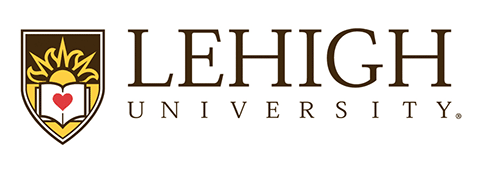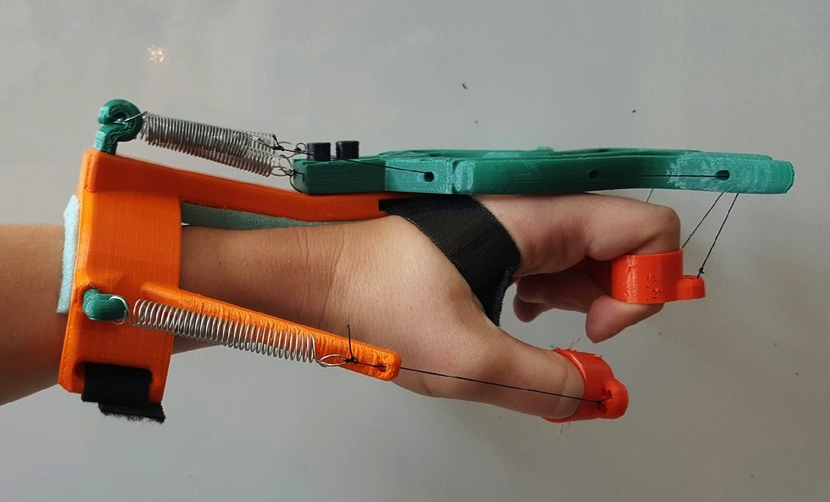 The 3D printing space is has recently become a platform for affordable, functional, customizable prosthetic hands and arms. Whether it is through organizations such as e-NABLE, or other groups such as Robohand, the technology has enabled people from all around the world to fabricate prosthetic hands for friends, loved ones, and even complete strangers.
The 3D printing space is has recently become a platform for affordable, functional, customizable prosthetic hands and arms. Whether it is through organizations such as e-NABLE, or other groups such as Robohand, the technology has enabled people from all around the world to fabricate prosthetic hands for friends, loved ones, and even complete strangers.
This originally was the goal of three students from Lehigh University; Elena Ramirez, Colleen Perry, and Jeff Peisner. Ramirez, who recently graduated from the university, tells 3DPrint.com that she and her two fellow students got together during their junior year in order to write up a proposal to 3D print prosthetic hands for children.
“Our goal was to make an inexpensive alternative for users that rapidly outgrow these devices,” Ramirez tells 3DPrint.com. “Another important reason for using 3D printing was that we could print prosthetics in a variety of colors and shapes, making a device that’s fun to wear rather than masking a disability.”
After receiving funding through Lehigh’s Mountaintop Experience Program and teaming with Good Shepherd Rehabilitation Hospital in Allentown, PA, the team soon came to the realization that the market for 3D printed prosthetic designs seemed to be rather saturated.
“Furthermore, we learned [that] not many children need prosthetics after consulting with therapists at Good Shepherd,” Ramirez tells us. “We switched direction because we thought we could make a bigger difference designing exoskeletons for rehabilitation.”
That switch culminated in the creation of quite the unique 3D printed device that Ramirez calls the Aquahand. Currently in its second year of development, the project has taken on three new students — Emily Macmillan, Dan Levy, and Sam He — and the researchers are currently working on creating separate exoskeletons for three different movements, as well as the code needed to simplify the sizing which generates measurements from a simple photo of a recipient’s hand. Ramirez designed the exoskeleton in SolidWorks, and this summer has been working diligently to streamline the design and improve upon the aesthetics.
The device is designed for patients who suffer from movement disorders, especially those caused by strokes. Many stroke victims suffer from a condition called spastic muscle tone, which causes them trouble opening their hand.
“The functionality of the Aquahand is based on the concept of neuroplasticity — the brain’s ability to rewire synapses and neural connections from repetitive movement,” Ramirez tells us. “A patient can relearn a movement if it’s performed ~400 times/hour. However, this requires assistance from a therapist or medical device. The springs are the driving force to open the hand. I can attach springs based on desired strength since muscle tone varies across patients. After the Aquahand opens the hand, the patient can close using his or her own muscle tone. This allows a patient to repeat the gross grasp movement. The hope is that a patient relearns the movement to the point where they can grasp without exoskeleton or a therapist’s assistance.”
While the design is intended mostly for patients with spastic muscle tone, Ramirez says that there are other potential uses as well, such as for individuals who have flaccid muscle tone, as the Aquahand provides for fine motor exercises. Ramirez and team tried to keep as much of the device 3D printable as possible, but they did require the use of several parts which could not printed. These include the springs, strings, straps, and pads.
The design files for the Aquahand have been made available for others to download and 3D print themselves on Thingiverse. It should be interesting to see if anyone downloads and possibly iterates upon this design in the future.
Another variation of a similar assistive exoskeleton device, called the Spiderhand, caught our attention earlier this week. From the same team working with the Mountaintop Experience Program, the Spiderhand comes from one of Ramirez’s collaborators, Dan Levy. Intended for use by a stroke victim with flaccid muscle tone, the Spiderhand too is available for download at Thingiverse.
What do you think about the potential these devices have to assist those needing muscle flexibility? Discuss in the Aquahand forum thread on 3DPB.com.
Subscribe to Our Email Newsletter
Stay up-to-date on all the latest news from the 3D printing industry and receive information and offers from third party vendors.
You May Also Like
3D Printing Unpeeled: New Arkema Material for HP, Saddle and Macro MEMS
A new Arkema material for MJF is said to reduce costs per part by up to 25% and have an 85% reusability ratio. HP 3D HR PA 12 S has been...
3D Printing News Briefs, January 20, 2024: FDM, LPBF, Underwater 3D Printer, Racing, & More
We’re starting off with a process certification in today’s 3D Printing News Briefs, and then moving on to research about solute trapping, laser powder bed fusion, and then moving on...
3D Printing Webinar and Event Roundup: December 3, 2023
We’ve got plenty of events and webinars coming up for you this week! Quickparts is having a Manufacturing Roadshow, America Makes is holding a Member Town Hall, Stratafest makes two...
Formnext 2023 Day Three: Slam Dunk
I’m high—high on trade show. I’ve met numerous new faces and reconnected with old friends, creating an absolutely wonderful atmosphere. The excitement is palpable over several emerging developments. The high...


































